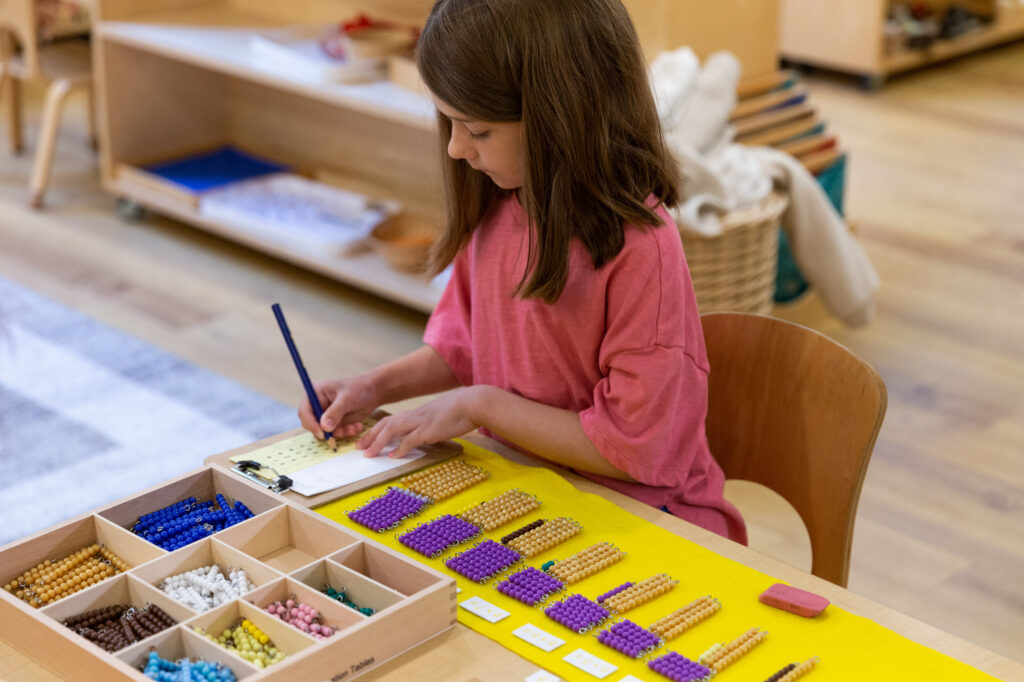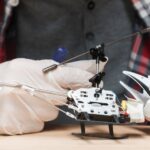Welcome, curious minds and passionate parents, to a journey that will unveil the secrets of one of the most renowned educational approaches in the world – the Montessori Method. Prepare to embark on an adventure where learning is not confined within four walls but rather nurtured through exploration, independence, and self-discovery.
In this blog post, we will delve into the fascinating history and principles that shape Montessori education. We’ll take a peek inside those enchanting classrooms filled with unique teaching materials designed to captivate young hearts and minds. And as we unravel its many benefits for children’s development, you’ll even discover how you can apply elements of this method within your own home.
The History of the Montessori Method
The history of the Montessori Method is a fascinating journey that began over a century ago. It all started with Dr. Maria Montessori, an Italian physician and educator who had a vision for revolutionizing education.
In the early 1900s, Dr. Montessori was working with children in Rome’s slums and noticed their hunger for knowledge and their natural curiosity. This observation led her to develop a new approach to education that focused on nurturing the whole child—mind, body, and spirit.
Dr. Montessori believed that children possess an innate ability to learn and grow when given the freedom to explore their environment at their own pace. She developed unique teaching materials and techniques that allowed children to engage in hands-on learning experiences.
As word spread about Dr. Montessori’s innovative methods, educators from around the world became interested in her work. The first Montessori school was opened in Rome in 1907, followed by schools in other countries like India, Spain, and the United States.
Despite facing challenges during World War II when many of her schools were forced to close, Dr. Montessori’s ideas continued to inspire educators globally even after her death in 1952.
Today, the Montessori Method has gained widespread recognition for its focus on independence, self-direction, collaboration, and respect for each child as an individual learner.
The impact of this approach can be seen not only through successful individuals who credit their achievements to a Montessori education but also through research studies highlighting its benefits across various cognitive domains such as academic achievement and social-emotional development.
Key Principles and Philosophy of Montessori Education
Montessori education is guided by a set of key principles and a unique philosophy that sets it apart from traditional educational approaches. At its core, the Montessori method focuses on fostering independence, self-directed learning, and the holistic development of each child.
One fundamental principle of Montessori education is respect for the child’s individuality. The approach recognizes that children have their own pace of learning and unique interests. Rather than imposing rigid curricula or predetermined outcomes, Montessori educators encourage children to explore their passions and follow their natural curiosity.
Another important principle is the emphasis on hands-on, experiential learning. In a Montessori classroom, children engage with specially designed materials that promote sensory exploration and independent problem-solving skills. These materials are carefully selected to foster cognitive development while allowing children to learn at their own pace.
The role of the teacher in a Montessori setting is different from that in traditional classrooms. Teachers act as guides or facilitators rather than lecturers. They observe each child’s progress closely and offer individualized support when needed while encouraging independence.
The multi-age classrooms in Montessori education also play a significant role in promoting social-emotional growth among students. Younger ones benefit from observing older peers’ behavior as they acquire new skills, while older students reinforce their knowledge by helping younger classmates – creating an environment built upon cooperation rather than competition.
The Classroom Environment in Montessori Education
Step into a Montessori classroom and you’ll immediately notice the vibrant, inviting atmosphere. It’s not your traditional setup of rows of desks facing toward the front. Instead, children are free to move about and explore at their own pace.
In a Montessori classroom, there is an emphasis on creating a calm and orderly environment that promotes concentration and independence. The furniture is child-sized, allowing students to easily access materials without relying on adult assistance.
You’ll find various learning areas designed for different subjects such as language, math, science, practical life skills, and cultural studies. Each area is carefully arranged with attractive materials that engage the senses and spark curiosity.
The space also includes plenty of open shelves where materials are neatly organized and displayed. This encourages children to make independent choices based on their interests while promoting responsibility for taking care of their own learning tools.
One key aspect of the Montessori classroom is the mixed-age grouping. Children from different age groups learn together in a community-like setting where older students serve as role models for younger ones. This fosters collaboration, empathy, and social development.
Unique Teaching Materials and Techniques Used in Montessori Education
One of the key aspects that sets Montessori education apart from traditional methods is the use of unique teaching materials and techniques. Maria Montessori believed that children learn best through hands-on experiences, and she developed a range of specialized materials to facilitate this process.
In a Montessori classroom, you will find carefully crafted materials designed to capture children’s interest and engage their senses. From sensorial materials like color tablets and geometric solids to practical life activities such as pouring water or polishing silverware, each material serves a specific purpose in promoting learning and development.
The use of these materials encourages independent exploration and problem-solving skills. For example, the famous pink tower allows children to explore concepts like size, dimension, balance, and spatial relationships. The moveable alphabet helps them develop language skills by enabling them to build words phonetically.
Montessori teachers are trained to observe students closely so they can provide individualized guidance when needed. They foster independence by allowing children freedom within limits – an essential aspect of the method. Teachers act as guides rather than lecturers, facilitating learning opportunities based on each child’s interests and abilities.
Benefits of a Montessori Education for Children
The Montessori Method of education has gained popularity over the years due to its numerous benefits for children. One of the key advantages is that it promotes independence and self-discipline. In a Montessori classroom, children have the freedom to choose their own activities and work at their own pace. This encourages them to take ownership of their learning and develop a sense of responsibility.
Another benefit is that Montessori education fosters a love for learning in children. By providing hands-on materials and engaging activities, it creates an environment where curiosity is nurtured and exploration is encouraged. Children are able to learn through all their senses, making the learning process more enjoyable and meaningful.
Montessori also emphasizes holistic development, focusing on not just academics but also social skills, emotional intelligence, and practical life skills. Through collaborative projects, children learn how to communicate effectively, solve problems together, and respect each other’s ideas.
Furthermore, Montessori classrooms promote individualized instruction tailored to each child’s unique needs and interests. Teachers observe each child closely to understand their strengths and challenges so they can provide appropriate guidance and support.
Applying the Montessori Method at Home
Applying the Montessori Method at home can be a wonderful way to foster your child’s holistic development. While it may seem daunting at first, incorporating Montessori principles into your daily routine is easier than you think.
One key aspect of the Montessori approach is creating an environment that promotes independence and exploration. You can start by setting up child-sized furniture and organizing materials in accessible and orderly ways. This encourages your child to take responsibility for their own learning and allows them to freely navigate their surroundings.
Another important element is providing opportunities for hands-on learning. Instead of relying solely on textbooks or worksheets, offer activities that engage all senses. For instance, involve your child in cooking or gardening projects where they can learn practical life skills while also developing fine motor skills.
Incorporating nature into your home environment is also essential in the Montessori Method. Create a space where your child can explore natural materials like rocks, leaves, and shells. Encourage outdoor playtime and provide ample time for unstructured exploration in nature.
Embrace open-ended toys instead of those with predetermined outcomes. Toys like blocks, puzzles, or art supplies allow children to use their imagination and problem-solving abilities freely.
By applying these principles at home, you are fostering an environment that supports your child’s natural curiosity and love for learning – just as Maria Montessori intended! So go ahead, and create a nurturing space where independent thinking thrives!
Challenges and Criticisms of the Montessori Method
While the Montessori Method has gained popularity in recent years, it is not without its fair share of challenges and criticisms. One major criticism is that the method can be too rigid and structured for some children. Critics argue that the emphasis on individual work may limit opportunities for collaborative learning and social interaction.
Another challenge lies in the training required to become a Montessori teacher. The specialized education needed to fully understand and implement this approach can be time-consuming and costly. Additionally, there is a lack of standardized certification across different Montessori schools, leading to variations in quality.
Some parents express concerns about whether their child will be adequately prepared academically if they solely follow a Montessori curriculum. This concern arises from the fact that traditional academic subjects are introduced later in comparison to conventional education methods.
Furthermore, critics question whether the freedom given to students within a Montessori classroom setting may hinder their ability to adapt to more structured environments in later stages of their education or professional life.
Despite these challenges and criticisms, many proponents argue that with proper implementation and adaptation, these concerns can be addressed. They believe that by focusing on individualized learning experiences tailored to each child’s needs, while still providing opportunities for collaboration and exposure to traditional academic subjects when appropriate, the benefits of a Montessori education outweigh any potential drawbacks.
Success Stories and Research on
The Montessori Method has been implemented in schools around the world for over a century, and its impact on children’s education is well-documented. Numerous success stories and research studies have highlighted the effectiveness of this holistic approach to learning.
One notable success story comes from the city of Reggio Emilia in Italy, where an early childhood education program inspired by Montessori principles was established. This program has gained international recognition for its focus on child-led learning, collaboration, and creativity. The results have been impressive, with students showing higher levels of critical thinking skills, problem-solving abilities, and social-emotional development.
In addition to success stories like these, there is also a growing body of research that supports the benefits of a Montessori education. A study published in Science magazine found that children who attended Montessori preschools showed significantly higher academic achievement and executive function skills compared to those who attended traditional preschools.
Another study conducted by Angeline Lillard at the University of Virginia compared children enrolled in Montessori programs with those attending other types of schools. The findings revealed that the Montessori students displayed superior academic performance as well as stronger social skills such as empathy and cooperation.
Furthermore, research has shown that children who receive a Montessori education are more likely to develop independence, self-discipline, creativity, and resilience – qualities that are highly valued in today’s rapidly changing world.







